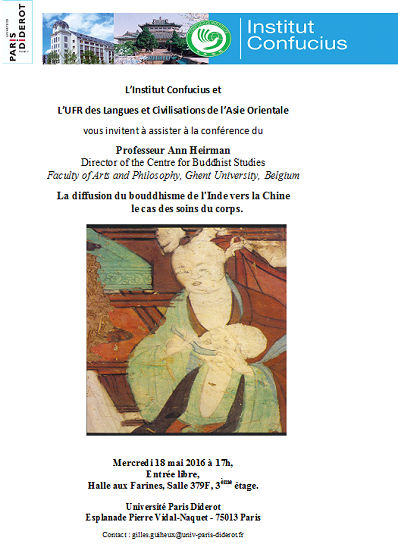
Le résumé :
When discussing Buddhism in ancient India and China, monasteries always occupy a central place, as monastic life is a major factor in the creation of Buddhist identity. In all kinds of texts, and certainly in disciplinary texts, monastic life therefore receives a great deal of attention: monks represent the Buddhist community and the Dharma. This is also the case with respect to bodily care. Although bodily care practices might seem trivial, they reveal what the community stands for, at least normatively. In this paper, I discuss how this normative ideal was transferred from India to China, taking into account the role of Buddhist monastics in the social networks to which they belonged. I explore how the threshold for becoming a monk advanced over time, with purity attaining an ever more central position in Buddhist discourse on bodily care.

